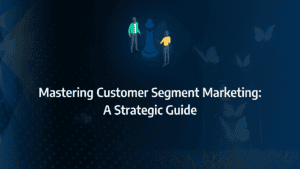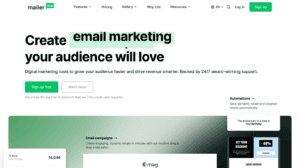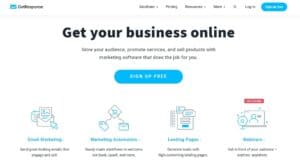Mastering Email Marketing for Business Growth
Unlock the power of email marketing to engage your audience and drive conversions. Learn effective strategies, tools, and best practices for success.
Email marketing is a cornerstone of digital marketing, offering one of the highest returns on investment (ROI) of any channel. Businesses can use it to build customer relationships, nurture leads, and convert prospects into loyal clients. This article covers the fundamentals of email marketing, providing actionable tips and tools to help you craft high-converting campaigns.
1. What is Email Marketing?
Email marketing involves sending targeted messages to a group of subscribers to promote products, share updates, or provide valuable information. It is a direct, personalized form of communication that helps businesses maintain strong relationships with their audience.
2. Why Email Marketing is Crucial for Your Business
Email marketing remains one of the most effective ways to grow your business for several reasons:
- Cost-Effective: Email marketing is one of the most affordable marketing channels, with a potential ROI of $42 for every dollar spent.
- Direct Access to Customers: Unlike social media, email allows you to communicate directly with your audience, avoiding algorithm interference.
- Personalization: Email marketing platforms enable you to tailor content specifically to individual subscribers based on their behavior, interests, and demographics.
- Automation: You can create automated email sequences, saving time while engaging with leads and customers.
3. Building an Effective Email List
Your email marketing success starts with a quality email list. Here’s how to build and grow one:
Opt-in Forms
Use opt-in forms on your website to capture leads. Ensure the forms are placed on key pages such as your homepage, blog posts, and landing pages. Offer a compelling incentive, such as an exclusive discount, free eBook, or access to a webinar, in exchange for visitors’ email addresses.
Lead Magnets
Lead magnets are valuable resources you offer in exchange for a visitor’s contact information. Examples include free guides, templates, or courses that solve a problem for your target audience.
Segmentation
Segmentation is critical to email marketing success. Organize your email list by segments such as location, behavior, and interests to deliver personalized content that resonates with each group.
4. Creating High-Converting Email Campaigns
To build an effective email campaign, focus on delivering value through relevant and engaging content. Here’s how:
Subject Lines
Your subject line is the first thing a subscriber sees. It needs to be compelling enough to entice them to open the email. Keep it short (40-60 characters), use action-oriented language, and add personalization (like the subscriber’s name) when possible.
Email Copy
The body of your email should be concise and value-driven. Whether you’re sending a newsletter, product update, or promotional offer, ensure that the content addresses the subscriber’s needs and includes a clear call to action (CTA).
CTAs
A call to action is the most critical element of your email. Make it stand out with bold buttons or highlighted text. The CTA should be specific and action-oriented, like “Shop Now,” “Download the Guide,” or “Claim Your Discount.”
A/B Testing
To continuously improve your email campaigns, run A/B tests. This involves sending two versions of an email to small segments of your list and tracking which version performs better. You can test subject lines, copy, or CTAs to optimize future emails.
5. Best Practices for Email Marketing Success
For long-term email marketing success, follow these best practices:
Consistency
Maintain a regular schedule so your audience knows when to expect emails. However, be mindful of frequency to avoid overwhelming your subscribers. For most businesses, a weekly or bi-weekly cadence works well.
Mobile Optimization
With nearly half of all emails opened on mobile devices, it’s critical to ensure your emails are mobile-friendly. Use responsive email templates, keep subject lines short, and ensure CTAs are easily clickable on mobile devices.
Personalization
Emails that feel personal and relevant perform better. Use subscriber names, recommend products based on past purchases, and tailor content based on their interests. Many email platforms offer advanced personalization features, so take full advantage.
Comply with GDPR and CAN-SPAM
It’s crucial to comply with data protection regulations like GDPR and CAN-SPAM. This includes getting explicit consent from subscribers, offering easy unsubscribe options, and providing clear information on how their data will be used.
6. Measuring Email Marketing Performance
To improve your email marketing campaigns, track and analyze these key metrics:
- Open Rate: The percentage of subscribers who opened your email. Improve this with optimized subject lines and personalized content.
- Click-Through Rate (CTR): The percentage of subscribers who clicked a link within your email. High CTRs indicate that your email content and CTAs are engaging.
- Conversion Rate: The percentage of subscribers who completed a desired action, such as making a purchase or signing up for a webinar.
- Unsubscribe Rate: The percentage of subscribers who opt out after receiving your emails. A high unsubscribe rate could indicate you’re sending emails too frequently or your content isn’t valuable to your audience.
7. Top Email Marketing Tools to Simplify Your Strategy
To make the most of your email marketing efforts, consider using these tools:
- Drip – Drip is an email marketing automation tool built for eCommerce businesses, offering advanced segmentation and personalized customer experiences.
- ConvertKit – Best suited for creators, ConvertKit helps you build relationships with your audience through email automation, landing pages, and customizable forms.
- AWeber – AWeber offers robust email marketing and automation features, making it easy to create engaging emails and track campaign performance.
- GetResponse – A comprehensive marketing platform that combines email marketing with landing page creation, webinars, and CRM integration.
- Mailchimp – One of the most popular email marketing platforms, Mailchimp provides powerful automation and analytics tools, suitable for businesses of all sizes.
Conclusion
Email marketing is an invaluable strategy for growing your business, building relationships with your audience, and driving conversions. By focusing on growing a quality email list, delivering personalized content, and using the right tools, you can set your business up for long-term success in email marketing.
FAQs
What is email marketing?
Email marketing is the practice of sending targeted emails to a group of subscribers to promote products, services, or valuable content. It’s used to build relationships, nurture leads, and drive conversions.
How can I build an effective email list?
You can build an effective email list by creating opt-in forms on key website pages, offering valuable lead magnets, and segmenting your audience to deliver personalized content.
What are the best tools for email marketing?
Top email marketing tools include Drip, ConvertKit, AWeber, GetResponse, and Mailchimp. These platforms offer automation, segmentation, and analytics to streamline your campaigns.
How often should I send marketing emails?
Consistency is key, but don’t overwhelm your subscribers. A weekly or bi-weekly schedule is generally ideal, but the frequency can vary depending on your audience and goals.
What metrics should I track in email marketing?
Key metrics include open rates, click-through rates (CTR), conversion rates, and unsubscribe rates. Tracking these will help optimize your email marketing strategy.
Top Tools to Simplify and Scale Your Business:
- Drip – Automate your email marketing campaigns with advanced segmentation and deliver personalized customer experiences.
- ConvertKit – Perfect for creators, offering email automation, customizable forms, and landing pages.
- AWeber – A user-friendly email marketing platform that offers robust automation features for small businesses.
- GetResponse – Combines email marketing, landing pages, and webinar tools into a single platform to enhance your marketing strategy.
- Mailchimp – A comprehensive solution for businesses of all sizes, Mailchimp offers email automation, analytics, and easy-to-use templates.
Keywords: email marketing, lead generation, email campaigns, marketing automation, conversion optimization, email marketing tools, personalization, email marketing best practices










